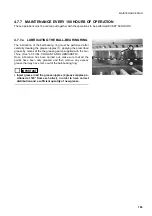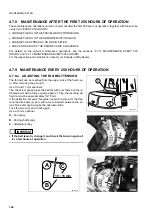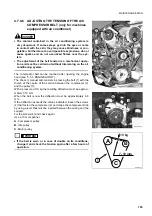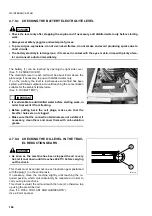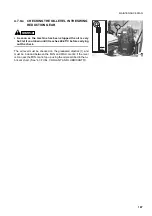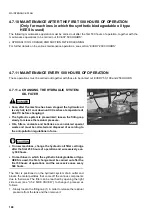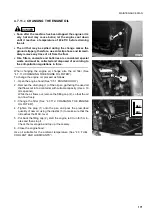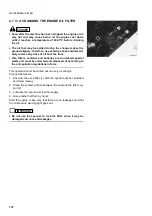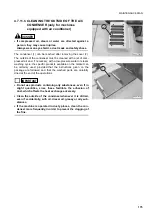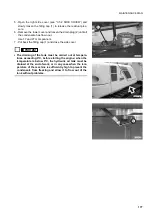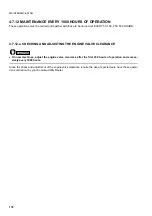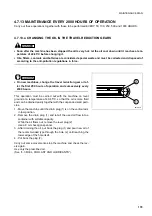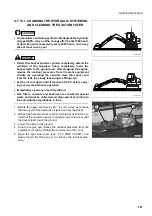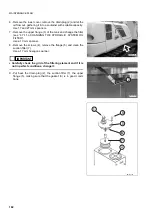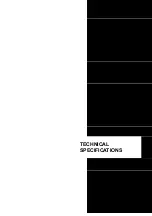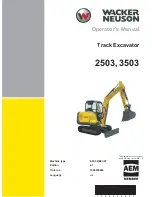
MAINTENANCE PLAN
174
4.7.11.f DRAINING THE FUEL TANK
4.7.11.g CLEANING THE OUTSIDE OF THE RADIA-
TORS
DANGER
•
When draining the fuel tank, avoid spilling fuel, since this
may cause fires.
•
If some fuel is accidentally spilled, clean the dirty area im-
mediately, in order to prevent it from getting slippery and to
avoid fires.
This operation serves to let all the impurities and the condensate
flow out of the tank; open the cock (1) at the base of the tank and
wait until clean fuel flows out.
IMPORTANT
☞
•
The tank must be drained before starting the engine, with
temperatures exceeding 0°C; when the temperature is be-
low 0°C, the tank must be drained at the end of work or in
any case with the machine at operating temperature, to pre-
vent the condensate from freezing.
•
The condensate and the impurities that may have accumu-
lated inside the tank must be eliminated before refuelling.
RWAA1170
1
DANGER
•
If compressed air, steam or water are directed against a
person, they may cause injuries.
Always wear an eye shield, a dust mask and safety shoes.
The radiators can be reached after opening the engine hood (see
“3.5.1 ENGINE HOOD”). The outside of the radiators must be
cleaned with a jet of compressed air and, if necessary, with a low-
pressure water or steam washing cycle; the specific products
available on the market can be certainly used, provided that the
instructions given on the package are followed and that the
washed parts are carefully dried at the end of the operations.
IMPORTANT
☞
•
Do not use products containing oily substances, even if in
slight quantities, since these facilitate the adhesion of
dust, which affects the heat exchange adversely.
•
Clean the outside of the radiators whenever the radiator
and the heat exchanger are dirtied, even if accidentally,
with oil, diesel oil, greasy or oily substances.
•
If the machine is used in dusty places, clean the radiator
and the exchanger more frequently, in order to avoid any
clogging of the fins.
RWAA12230
Summary of Contents for PC110R-1
Page 2: ......
Page 19: ...17 SAFETY AND ACCIDENT PREVENTION...
Page 51: ...49 THE MACHINE AND ITS OPERATIONS...
Page 126: ...124 PAGE INTENTIONALLY LEFT BLANK...
Page 127: ...125 MAINTENANCE...
Page 190: ...188 PAGE INTENTIONALLY LEFT BLANK...
Page 191: ...189 TECHNICAL SPECIFICATIONS...
Page 198: ...196 PAGE INTENTIONALLY LEFT BLANK...
Page 199: ...197 AUTHORISED OPTIONAL EQUIPMENT...




